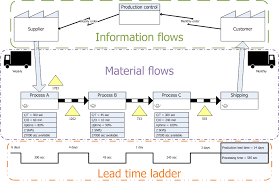In my years as a Business Process Improvement Coach, I have been called in to work with companies who have a new work force. In one particular case, a company acquired another, complete with an unskilled labor force, and needed to train them all quickly. The need for staff training can be created from mergers, acquisitions, seasonal or temporary employment, or a jump in production demands requiring increased staffing. It can also happen when employees are transferred to a new department, or with any big shift in management or restructuring. What if management took a proactive approach to change?
The need for business process improvement is always noticed at times of transition. Fresh perspectives can offer feedback and this feedback should lead to improvements. Whenever new job positions are created, or new employees require training, business process improvement can get everyone on the same page and be more effective than ever before.
Business Process Improvement and Human Capital Management
Human Resources is a highly documented, regulated, and important responsibility. With payroll being the highest expense in most businesses, efficiency and productivity in the area of Human Capital Management can make a huge impact on the bottom line. Overall, employers are seeking business process improvement in the areas of:
Increasing Employment Engagements. There are many distractions that can vie for an employee’s time. How do we decrease these distractions in a way that maintains high morale and improves engagement?
Increased Workflow Productivity. What systems, technology and processes can be put in place, automated, and tightened up? What training is needed to increase productivity?
Reducing Employee Turnover. Some turnover will always be expected, as people, places and circumstances change. However, high levels of turnover, or even turnover above the expected attrition, lead to hidden expenses and loss in productivity. What is frustrating and unaddressed in our workforce? Where can we be proactive, rather than reactive in relationship to staff management?
Reducing Onboarding Time. When we do have employee turnover, how can we shorten the time it takes to recruit, hire, train and get employees to the level of production we require?
How a Business Process Improvement Professional Helps
Business Process Improvement Professionals, such as myself, have an objective, trained eye to see what’s working and what’s missing. Through several assessment tools, we are able to pinpoint redundancies, holes, strengths, weaknesses and more. We can create job descriptions, job instructions, build processes, and improve current workflows to maximize effectiveness and engagement. By creating consistent business processes that take into consideration what the assessments are telling us, we can get everyone on the same page, and quickly up to speed in becoming a successful, productive, and happy member of your work force.
Contact me today to learn more about how I help businesses simplify their human capital management through business process improvement strategies. Cleaner processes create faster results, better productivity and employee satisfaction. Together, we will create a continuous improvement culture and healthier bottom line.


